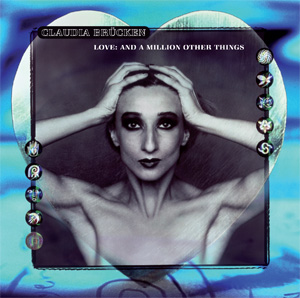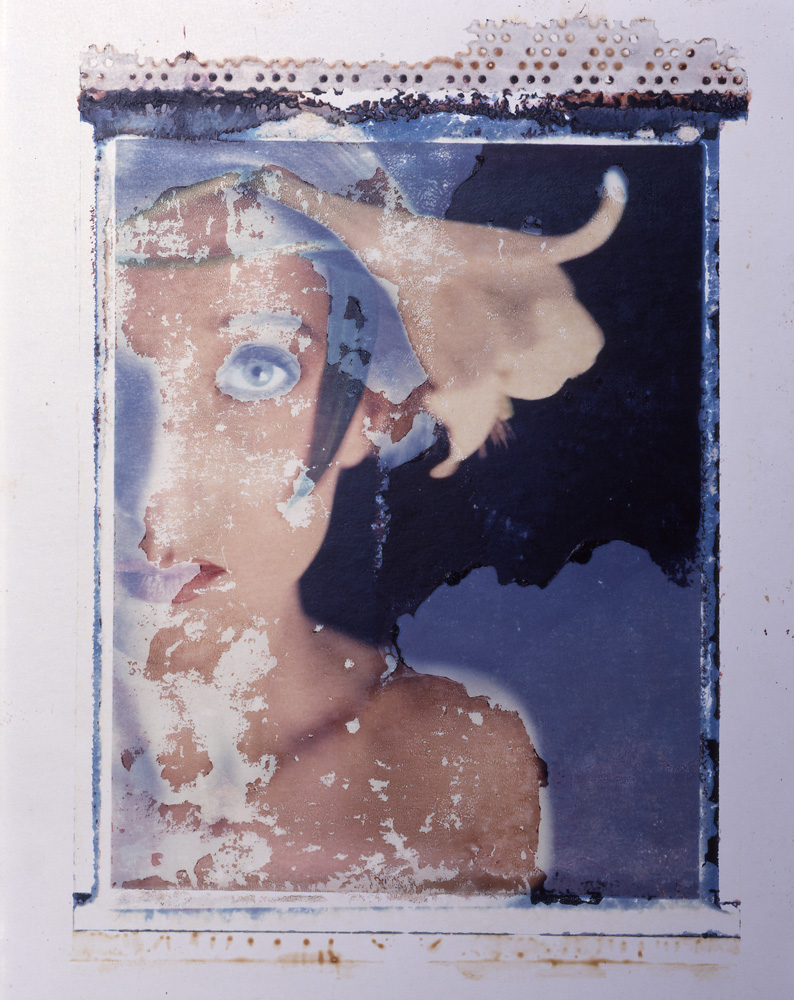
History:
Part One
Part Two
Part Three •
Part Four
Part Five
Part Six
Product:

Image:

Visit the Photography/Image section for more Love: and a Million Other Things shots
References:
John Uriel
Pascal Gabriel
Steve Nye
Oblique Strategies
The Bow Gamelan Orchestra
The Douglas Brothers
Island Records
Experience, part three:
Island/Millions/Solo/Ether/ByTheWay/Surprise
My third album was another debut, really – my first album under my own name, this time for Island Records, which was really where I had started as ZTT were themselves a part of Island when I was with Propaganda. So some things were familiar, even though I was no longer on ZTT, home of my first two ‘debuts’.
My main songwriting partner on this album was John Uriel, who I had met I thought through Glenn Gregory of Heaven 17 (…he remembers it differently). John was a very different writer to Thomas and indeed to Ralf and Michael of Propaganda, so here I was, beginning again, but this time with more experience and understanding of what I wanted. I think in the end those parts of A Secret Wish and Laughter, Tears and Rage that were very much me were extended and refined in this new project, which became Love: and a Million Other Things – the title of an album that wanted the listener to imagine a film with that title, where the soundtrack was made of these songs. What kind of movie would that be? Someone leaves home, moves to another country and the rest is adventure and changing times and making their mind up about millions of things.
I did a lot of commuting from London to Liverpool – John lived in the same house as Thomas Lang and I got to know quite a few musicians from Liverpool. Some of them would join me later during the recording of the album and became part of my band ‘The Shiver of Flowers’. Most of the lyrics were written in my garden in North London in the summer of 1989. John would give me musical ideas and snippets and I’d live with them for a little while. When I felt I had something to show I would take the train up to Liverpool. John and I would exchange ideas, define the melodies and I would go back to London to finish the lyrics. This went on for quite a few months until we gathered enough material to make an album. It’s the most autobiographical of all my albums, very much a solo record in that sense, and very much like a diary. The tone is conversational and direct.
Island gave me a more responsible budget than I had got at ZTT, and it was a far more structured recording process. Pascal Gabriel produced most of the songs, with Steve Nye, who had produced Japan and David Sylvian records, working on three of the songs. Pascal was very much of the electronic world, Steve was like a more relaxed, certainly gentler, less technologically-obsessed Stephen Lipson.
We set out for the album to be very electronic and dance orientated, hard, precise and punchy and Pascal’s production style was just that. He was the perfect man for the job. We started out doing some pre-production at Liquidator with Pascal, a programmer and keyboard player called Luke Tunney and myself, where we mapped out the album and put the songs into the right arrangements and where we decided on the general direction and style of each song. If we got stuck we would get out Brian Eno’s Oblique Strategies, a deck of cards in which each card has a cryptic remark or random insight to resolve a dilemma. I did like Pascal’s approach and experimental spirit, his sense of play and I felt we had a lot in common.
We recorded the majority of the album at Mayfair Studios in Primrose Hill. Noel, the house engineer at a time, was also very easy to work with. We recorded seven songs in a relatively short amount of time. It was summer and the World Cup was on… It was the most unproblematic album I’ve ever made and I remember feeling very much liberated at that point, with a clear vision of what image I wanted to put across and what I wanted to sound like.
The closer of the album is the song called ‘Surprise’. The song is about the fall of the Berlin Wall and the opening of the Iron Curtain. I remember watching this incredible historical moment on TV, a truly emotional moment… John and I dedicated this song to Mikhail Gorbachev. The Bow Gamelan Orchestra whose soundscapes shape the backing track (musical scape) for the song, and the strangeness of the instruments mirror the strangeness of the times, the hopes, the expectations… The excitement. There are noises of tapes running backwards, an on-going sample of a singing monk throughout the song, the sound of fire which is blown through metal pipes (the fire brigade was in the studio at the time of recording).
John’s melodies often had a hint of soul and I liked introducing this element into my music. ‘Kiss Like Ether’ featured two great session singers, Claudia Fontaine and Chris Ballin. It was brilliant hearing them sing together. With every chorus their intricate vocal parts build in a subtle way into something quite big in the end choruses, as they answer the lead vocal. It has this gospel quality to it, which I’m very fond of.
I very much enjoyed working with Peter Scamell on the video for ‘Kiss Like Ether’. It has a real psychedelic feel to it and the images he shot are very much in keeping with the slight surreal narrative of the song, and it is one of my personal favorites videos of mine. I love the dreamlike quality he captured and how he worked with colour. It is almost like a moving painting. It was shot on a deserted beach in Norfolk, and at the end of a long day we returned to our bus and I remember we all witnessed a strange display of very quick-moving silent objects in the red evening sky. Even the most down-to-earth people in our crew had difficulties finding a plausible explanation for what we had just seen… When I hear stories about unidentified flying objects I can’t help but think back to the end of the day of the video shoot for ‘Kiss Like Ether’.
The b-side for ‘Kiss Like Ether’ is a song called ‘I, Dream’. I remember the record company giving us one day in the studio to record the song. I went up to Liverpool with just the words – we had no song at that point but pieced it all together in a mad, long recording session with an engineer called Mark Pythian. This was my longest recording session ever. We started working at 10am and finished the next morning around 10am. We wrote, recorded and mixed this song during those mad 24 hours. It was totally exhausting but John and I were so pleased with the end result… There is something in this song that is reminiscent of Propaganda.
Working with Steve Nye was a very different studio experience altogether. His approach (method) was so different to all the producers I had previously worked with. There is very little programming in these songs and a real band is playing all the music. This was my first time recording like this, and these three songs, 'Always’, ‘Moments of Joy’ and ‘Baby Sigh’ are a lovely juxtaposition/make a good contrast to Pascal’s heavily-sequenced and programming-orientated style. I wish I could have made a whole album with Steve, who was brave enough and generous enough to take me out of just singing electronic music and allowed me to sing with a group, in a more informal, and less stylized setting. It gave me a new insight into what I was as a singer, and the importance of the performer – in a way, it liberated me from always thinking I was merely some sort of special effect in a very synthetic setting. Working with Pascal was very special, and I think we began to explore electro areas that many years later would be in the mainstream with people like Goldfrapp, Florence and Little Boots, but it was a privilege to work with Steve, and opened my mind to a new way or working and of writing.
For the album artwork I had the pleasure to work with the very talented Douglas Brothers. We had such a productive time at the photo shoot. We had so many ideas and just kept on shooting the whole day. There was plenty of material to chose from and we incorporated them all into the album and single artwork designs.
One of my favorite sleeve designs for any record I made is the 12” artwork for ‘Kiss Like Ether’, put together by Tim Vary at Island Records and using computer graphics by Graeme Hodges at IQ. It’s very lush and expensive looking and is rich in detail, something which has always been a thing of importance to me, especially after my time at ZTT.
So, yes, it was another change in circumstances, another change in who I was working and writing with, but it was becoming apparent that the one consistent thing – me – was as important as any of those other elements, and I was establishing a strong repertoire of songs that definitely had something in common that was not just my voice but also my worldview and my feelings. ‘p:Machinery’, ‘Snobbery & Decay’, ‘Kiss Like Ether’ – different groups, different writers, different producers, but all with a continuity that meant in a way I was moving on the original spirit and integrity of Propaganda more than the group itself.
